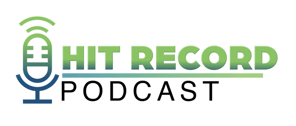Episode 60 - Inbound Marketing: Crank Up Your Bank or Credit Union Content Campaigns


Don't Miss An Episode, Subscribe Now

Meredith Olmstead and Rebecca Gwaltney from FI GROW Solutions delve into the world of content creation for your community bank or credit union. Learn more about how to effectively become an authority and trusted resource for your members or customers through effective content campaigns.
Key Takeaways:
- Content Campaigns for Financial Institutions: The importance of content campaigns for banks and credit unions. Content is SEO-optimized and designed to address specific pain points related to financial products and services. This includes creating pillar pages, lead capture forms, and follow-up blogs to engage and educate users.
- Benefits of Content Campaigns: Include problem-solving and trust building, nurture emails, effective marketing emails, as well as financial literacy and thought leadership.
- Strategies to Enhance Content Campaigns: The importance of increased email marketing, booster campaigns, and actions that can lead to sales.
Transcription:
If you're looking for best practices for your bank or credit union, join us while we talk all things sales, marketing and strategy for financial institutions. Let's make it happen with FI GROW Solutions.
Meredith Olmstead:
Hi, there. I'm Meredith Olmsted, CEO and founder of FI GROW Solutions. We are a digital marketing and sales consulting agency, and we work exclusively with banks and credit unions. And I am here with Rebecca Gwaltney. Say hi Rebecca.
Rebecca Gwaltney:
Hi, everyone.
Meredith Olmstead:
Rebecca is our inbound marketing guru. She basically coordinates our entire team around everything that we do around content and grabbing leads for our clients and bringing them in, to have them become new accounts, new customers, and potentially apply for new loans. But in general, she's also really driving lots of best practice around content for all of our clients and their websites, which we call their digital branches.
And so she and I were having a really interesting conversation about how we are working always to get better at doing content for banks and credit unions. And I was like, "Rebecca, I think maybe we ought to hit record and talk about this a little bit." First of all, so a lot of people don't really understand like, "Content campaigns? Why do we need a content campaign? We sell financial products and services, what do we need content for?"
So Rebecca, when you say how to crank up your content, that's kind of what we're talking about, how to make it better, how to get better results from content campaigns, what do you mean exactly?
Rebecca Gwaltney:
Right. I can understand why that would be confusing, some of the language isn't widely used or heard of. When we use the term "content campaigns" it's basically SEO optimized content that we help create for your bank or credit union. It is optimized with proper keywords and terms that we find your members and customers are searching on the internet. So when they have a problem and need a solution, our goal is to create content that helps you be found.
And it's comprised, so this is where we'll break it down. It's comprised of a pillar page, which includes a lead capture. So pillar pages can be 2,000 - 3,000 words on this topic that people are looking for help on. The lead capture is a form, so we gather their information and email address. We supply them the PDF of the eBook or checklist. And then surrounding that pillar are six to eight follow-up blogs, which offer more supportive content on the problem they're trying to solve.
Meredith Olmstead:
Gotcha. Basically, it's all of this content that lives on the website that is dealing with a pain point around financial products and services. An example could be, I think you said how to consolidate debt responsibly, and that could involve ... It's a pain point. People are in debt, we want to help them get out of debt. So it unpacks the problem for people, it helps give them good advice, while also really gently promoting products or services for the bank or credit union. So that makes sense.
Okay, that goes right into the benefits. So that's one of the benefits, that we're helping people solve problems that they are hopefully already online researching. And we definitely see that. People are out there like, "How to get out of debt," "low interest credit card," or something along those lines. So we're creating content that answers those questions, but does it in this really, really lengthy way that tells Google that the bank or credit union really knows what they're talking about around these financial products and services. And also shows the individual user, like the person who's reading it, "Hey, I have your best interest at heart."
That's definitely one of the benefits. What are some of the other benefits of content campaigns?
Rebecca Gwaltney:
Right. So we definitely talked about the creation of the content. I would have to say one of the benefits of the content is we also structure it in a way where nurture emails are sent out. Once they download that content, an automatic process will happen where, as the bank or credit union marketer, you can be hands off, but we will send nurture or follow-up emails to the customer or member, segmenting out the content we've created, delivering it to them a little bit at a time, so you're always going to be top of mind. The automated process keeps it off your plate, so that's a benefit. Once it's set up, it automatically does the work for you.
And email marketings are created too as part of the whole process. So it's not only the content, the nurture emails, but the marketing emails too. And those also promote the products, but these are all created and set up so it's hands off for you.
Meredith Olmstead:
And then they also, it's funny, because we know that we want to personalize their experience when they're coming to your bank or credit union website, for sure. That's something we do with all of our clients.
And the way that we do that is by knowing who they are on their IP address. And if we know that they have an existing product or service, we might show them a different product or service or a new feature around that product or service that they could take advantage of that they might not have already. And we can personalize, actually change the content in an email or on a webpage based on characteristics of a known user. But they have to be cookie, we have to know their IP address. So if they're downloading content, that helps cookie that customer or member, and then we can do more. We can give them better service basically, right?
Rebecca Gwaltney:
Yep. Better service, a better user experience. Exactly. You've covered all of it. Checking off that financial literacy box is also a great benefit for content campaigns and building trust, because actually giving them solutions to the problems in a trusting way that isn't overly salesy, it's a great presentation of the material. So it's a way to be in their corner.
Meredith Olmstead:
Yeah, it's really thought leadership in the area. It's like, okay, we don't want to just be talking about ourselves. We don't want to be just talking about our products and services. What we really want to be doing is answering questions, providing benefits, like having people's back in a sense with information around very complicated situations people find themselves in. People get into a lot of debt, they may really not know what to do in order to get out of it. They're researching, then if they read something really informative on your website, maybe they call you and they ask to speak to somebody who could then provide them with ideas for possible products. And it's just a great next step in deepening your relationship or potentially getting in front of somebody new.
All right, so we've got what content campaigns are. We have the benefits that we've unpacked. So now let's get back to the original question, which is how to crank up your content, how to do better. What are we finding with ... We know all this stuff that you have to do, all of this content. You have to make emails, you have to create to start promoting that content, nurturers, all of that. But what else can people be doing around these kinds of campaigns to make them even better?
Rebecca Gwaltney:
What we talked about, part of the process, you have the nurture emails, but you also have the marketing emails. And what we're finding is credit unions and banks in general are a little bit shy when it comes to sending out emails to their members.
So the great use about this content is that it's really beneficial to the member. "How can you raise your credit score?" "Give me tips on buying my first auto loan." We're giving them tips and tools to help solve the problems. So I'm sending them a marketing email, resending an existing marketing email that has already gone out, space them out quarterly, every six months, whatever your marketing department can handle. But putting this material back out in front of the membership, they're not going to remember. One email every six months, they're not going to remember what came out.
Meredith Olmstead:
Well, it's funny too because customers, or members like we call them in credit union land, on average I think that it's like 20 to 25% of marketing emails are even opened. With that number, you basically have to send four marketing emails. You could send the exact same marketing email four times, and on average a person would only open it once. I mean, of course there's going to be ... You don't want to do that. You don't want to send the exact same thing over and over and over again. But what that really tells us is that there's definitely space to be sending more emails or to be slightly tweaking them, changing the subject line, and resending them a week or so later.
And the other cool thing about it is you can resend almost the same marketing email to people who hadn't opened it the first time. So if you have a really good marketing program, you could clone it, send the exact same email again, and just make sure it doesn't go to anybody who's already opened it. So yes, absolutely. Resending or sending more marketing emails. We know across the board our clients, the clients we see in banks and credit unions, are not emailing enough. So absolutely, more marketing emails for sure.
Besides more marketing emails, and also maybe summary emails or annual or quarterly emails that just re-promote your big pieces of content, what other kinds of things can they do to boost it, to boost a campaign?
Rebecca Gwaltney:
Yeah, so good word choice, Meredith, because we actually have a booster campaign. We have booster campaigns that we use, and it's basically six to eight more blogs, there's no set number. But it's really to reinvigorate, put more content on that same topic. So it not only shows Google that you're educated on the topic, but you're continuing to add over time more information about that same topic authority, that topic that you're trying to target for your members or customers or solve.
We've noticed that adding that content, whether it's spread over time or in many boosts like that, it can definitely help your credit union or bank rank for new keywords surrounding that topic cluster and increase your ranking for the ones that your initial topic cluster was aiming for. So it's beneficial on all aspects of that.
Meredith Olmstead:
Yeah, I mean, we're always trying new things and trying to see how we can get better results. I think ideally, if budget wasn't a issue for people, you would have content campaigns that had 20, 30, 40 pieces of content even, and you were putting out new blogs around your key product lines two times a week if you had the budget and the team. We understand obviously those numbers are probably not super realistic for mid-size regional financial institutions.
But ideally we like to see a content campaign launch with that big pillar, possibly a smaller lead capture, like a checklist or something, and then yeah, like six to eight blogs. And then ideally you'd have 10 more blogs that we're launching once every other week for three months, and possibly even ongoing if you can afford it. So yes, I think more content in those campaigns is definitely better. I mean, even with FI GROW, we blog or do a podcast on almost a weekly basis around marketing for banks and credit unions, and that's how we get found. We don't run digital ads, it's all from our content. So yeah, it makes all the sense in the world really.
Last thing we talked about was sales.
Rebecca Gwaltney:
Sales. Absolutely.
Meredith Olmstead:
Sales is tricky, because a lot of times when people download an eBook or download a white paper or a checklist or an article that's been created around solving a pain point, they're not ready for me or for a salesperson to pick up the phone and call them. So that's why we put them into those nurtures.
But one thing you were talking about, and it makes sense to me, is a combination, creating a hot lead from a combination of actions. Can you give a quick example?
Rebecca Gwaltney:
Sure, yeah. So once you see that somebody's been interested in the topic and has downloaded the eBook, if they then maybe visit the product page and start exploring the rates. And then finally, if they show interest in one of the blogs that was in one of the nurture emails, they've shown a few different touch points, they've checked out the product, they've shown additional interest with a more specific blog, I think that's a good time to add them to the list.
Meredith Olmstead:
Yeah. So you have to have a sales team, otherwise you can do all this, but it has to be automated only. And you can do that. You could create a hot leads list that's populated based on digital behavior. You could take known contacts who've opened an email, downloaded an eBook and visited a product page, all in the last 15 days. You could put them on a hot lead list, put them into a workflow, and start sending them very specific, "This is how you apply. This is how you apply, this is," whatever kinds of emails, absolutely.
But if you have a sales team, you could also kick them onto a deal board or a follow-up list for your sales team to then reach out to that member or customer. Because more than likely they're known or they're very much a known contact in your database, even if they aren't an existing customer yet. But you probably, by this time because of all of these actions, you probably have a phone number, you've probably got an email, definitely got a name, those kinds of things.
So you could definitely reach out and try to give them a little bit more information, but then also really it is going to be about differentiating who you are, why they should actually pull the trigger and do business with you, and if they have any problems or roadblocks with the application process. Because if they've done all this stuff, they're probably really close to making a decision on your product. Yeah, it makes sense.
Rebecca Gwaltney:
Right. Definitely worth your time. Yeah.
Meredith Olmstead:
Yeah, yeah.
Rebecca Gwaltney:
Perfect.
Meredith Olmstead:
Awesome. Well, thank you so much, Rebecca. We really appreciate your expertise in this area. I know that you are just our content area expert, so it's always good to get your feedback and hear about how we can do a better job with content campaigns.
And if you all want to learn more about inbound marketing and sales, we have lots more blogs and podcasts on our website. We also got case studies and lots of eBooks around this stuff. So would love for you to visit us at figrow.com. And otherwise, in the meantime, let's just get out there and make it happen.








Blog comments